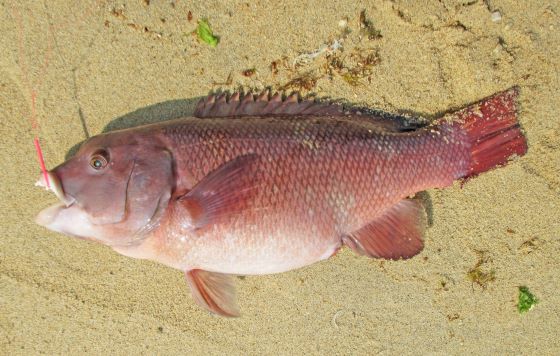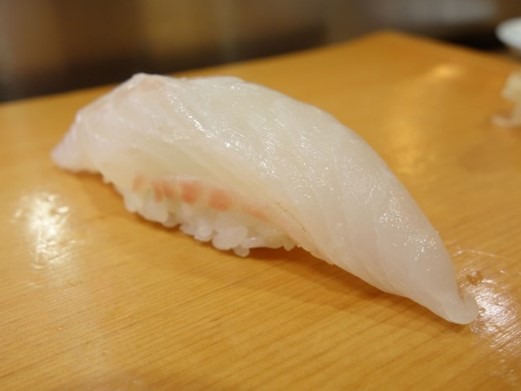
The appearance of Asian Sheepshead Wrasse (Kobudai)
Common name: Asian Sheepshead Wrasse, Bulgyhead wrasse, Cold porgy
Japanese name: Kobudai (瘤鯛)
Chinese common name: 金黄突额隆头鱼
Korean common name: 혹돔
Scientific name: Semicossyphus reticulatus (Valenciennes, 1839)
Nigiri sushi detail: Asian Sheepshead Wrasse (Kobudai) Nigiri sushi

The appearance of Asian Sheepshead Wrasse (Kobudai) nigiri
Characteristics:
Bulgyhead wrasse (Kobudai) is distributed south of the Shimokita Peninsula on the Pacific Ocean side, south of Niigata Prefecture on the Sea of Japan side, Korean Peninsula, East China Sea, and South China Sea. It inhabits coastal reefs with seaweed and its surroundings. The body length is 60~100 cm. Adults are dull reddish purple, but juveniles have an orange background with a white band running down the center of the body. As the male grows, a hump, a mass of fat, protrudes from the frontal area.
The name “Kobudai” may lead many people to think it is a member of the Red seabream (Tai) family, but in fact, it is not a member of the Tai but a member of the wrasse family. As juveniles, all Kobudai are female, but when they grow to about 50 cm in length, they convert to males.
Its white flesh makes it quite tasty. In the winter, when the fish loses its fishy smell, fresh ones are made into sashimi. When sliced thin and eaten as sashimi, it has a texture with a moderate elasticity that can be enjoyed, and each bite has a slight sweetness. It is also used in a variety of dishes regardless of genre, including Chinese and French cuisine.
Share this article